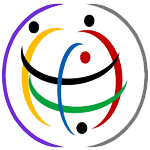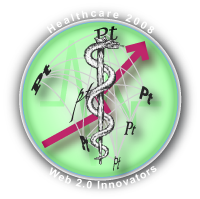By Christopher Rollyson Please be patient while this launches, over the weekend, CDT.
Cheers- Chris
By Christopher Rollyson Enterprise 2.0 and B2C Web 2.0 Show Serious Traction—But Social Sticky Wickets Remain—How to Trust?
 The Social Networking Conference (SNC) was an excellent place to check the pulse of Web 2.0 adoption from customer and provider perspectives. Producer Marc Lesnick explained in his opening remarks that, in the months preceding this conference, corporations had knocked on his door asking to get involved. His Ticonderoga Ventures had held several SNCs over the past few years, and it had been largely the purview of social networking start-ups and their facilitators. This is a very apt indication of the enterprise adoption predicted by my State of Social Networking Forrester coverage and 2007 Review. The Social Networking Conference (SNC) was an excellent place to check the pulse of Web 2.0 adoption from customer and provider perspectives. Producer Marc Lesnick explained in his opening remarks that, in the months preceding this conference, corporations had knocked on his door asking to get involved. His Ticonderoga Ventures had held several SNCs over the past few years, and it had been largely the purview of social networking start-ups and their facilitators. This is a very apt indication of the enterprise adoption predicted by my State of Social Networking Forrester coverage and 2007 Review.
SNC SF 2008 took place July 10-11, 2008 at the UC San Francisco’s Mission Bay Conference Center. It was a focused conference that balanced start-ups’ and enterprises’ innovation—with a dash of perspective from Apple co-founder Steve Wozniak and Social Networking Watch’s Mark Brooks. On the enterprise side, GE’s Grewal and GM’s Denison covered the enterprise 2.0 and B2C Web 2.0 perspectives respectively, while the U.S. Air Force’s Adkins presented nascent cross-boundary collaboration in the armed services. Start-ups Twitter, Mowave, Faceforce and many others gave fascinating examples of innovation along several vectors. I beta-released the Social Network Roadmap in my presentation and moderated a panel with Visible Path, Jigsaw and LinkedIn in which we discussed various aspects of how enterprises were using social networks. IBM’s Rawn Shah offered a useful network for “social context” for planning and solutions for social networks.
Notable, too, was Daniel Brusilovsky’s very lucid presentation, “Social Networks: a Teen Perspective. Daniel is the 15 year old founder of Teens in Tech.
I have coverage of all these tracks, which I’ll summarize before Analysis and Conclusions. The reportage follows this convention: the summaries are from my notes of speakers’ remarks, and when a sentence is parenthesized, it is a comment. Click on logos for abstracts of the tracks.
By Christopher Rollyson Web 2.0 and the Mergers and Acquisitions Industry at the AM&AA reveals how digital social networks are affecting mergers and acquisitions in the mid-market
Reports of “Character Building” Market—Significant Parallels with High Tech Bust—Plus, the Emerging Web 2.0 Vein
 The sub-prime induced correction of the U.S. financial sector has changed the context around M&A during the last year, and mergers and acquisitions experts met last week to share success stories, lessons learned and admonitions at the Alliance of Mergers & Acquisition Advisors Summer Conference July 22-25, 2008 at Chicago’s Wyndham Hotel. I was asked to present a new talk, “Leveraging a Web 2.0 Ecosystem to Grow Your Business,” and I had the opportunity to attend some of the other sessions. I’ll summarize their key points before adding some thoughts on the promise that Web 2.0 and social networks bring to deal marketing due to significantly decreased transaction costs. The sub-prime induced correction of the U.S. financial sector has changed the context around M&A during the last year, and mergers and acquisitions experts met last week to share success stories, lessons learned and admonitions at the Alliance of Mergers & Acquisition Advisors Summer Conference July 22-25, 2008 at Chicago’s Wyndham Hotel. I was asked to present a new talk, “Leveraging a Web 2.0 Ecosystem to Grow Your Business,” and I had the opportunity to attend some of the other sessions. I’ll summarize their key points before adding some thoughts on the promise that Web 2.0 and social networks bring to deal marketing due to significantly decreased transaction costs.
AM&AA members hail from all parts of a rich ecosystem of investment bankers, attorneys, private equity, brokers, intermediaries, CPAs and others who specialize in every aspect of architecting, researching, negotiating and executing deals. To make money consistently in M&A, one needs to know how to identify and manage a wide range of risks. The financial system’s painful correction is changing many of the metrics around M&A, but those who can adjust their strategies can do quite well. It’s necessary to accept the new conditions and to play by them.
As I listened to speakers briefing the audience on “the new reality,” I kept having flashbacks to the Web 1.0 tech bust: flight to quality, increased due diligence, firms having money but not spending it, intermediaries’ difficulty in changing sellers’ expectations. AM&AA members specialize in U.S.-based manufacturing, and their sources of funding aren’t VCs but investment banks and private equity firms. But they’re essentially in the same business: risk management and relationships. Managing exogenous shocks to their ecosystems.
By Christopher Rollyson Mashup of Social Networks and CRM Offers Glimpse of the Future: “Let Prospects Self-Report”
But Facebook Data Tickles Privacy Concerns—Will LinkedIn Seize the Day?
As a presenter at the Social Networking Conference, I was able to catch some excellent presentations, and one of the most eye-opening was Clara Shih’s “Enterprise Mashups: How Facebook Is Changing Sales and Marketing.” In a word, Clara and Facebook’s Todd Perry mashed up Facebook and Salesforce.com via AppExchange so that a prospect’s profile in Salesforce now includes select Facebook profile information in a separate pane (see illustration, right), providing a much richer “360° view” of the person to Salesforce users. The result is elegant, powerful and pregnant with social and business issues that I’ll explore briefly here.
Continue reading Faceforce.com Pioneers Enterprise “Social” Network Vision, Exposes Massive LinkedIn Opportunity
By Christopher Rollyson Have you found yourself looking at your LinkedIn network and recognizing too few people? Here’s how to sort it out
 Many executives have allowed their LinkedIn networks to grow by reactively accepting invitations from former colleagues, club members, people they met networking, etc. One day, when something compels them to look at “their” networks, they are dismayed to see that it’s not a pretty picture. They don’t recognize some of the names. Others aren’t really what they think of as “trusted.” They might get requests from their connections to connect them with someone else in their network whom they barely know. They don’t know what to do, and they wonder whether they should just throw it all away and start over. This is a very predictable and normal circumstance, and here I offer a step-by-step guide to reclaiming your network. Many executives have allowed their LinkedIn networks to grow by reactively accepting invitations from former colleagues, club members, people they met networking, etc. One day, when something compels them to look at “their” networks, they are dismayed to see that it’s not a pretty picture. They don’t recognize some of the names. Others aren’t really what they think of as “trusted.” They might get requests from their connections to connect them with someone else in their network whom they barely know. They don’t know what to do, and they wonder whether they should just throw it all away and start over. This is a very predictable and normal circumstance, and here I offer a step-by-step guide to reclaiming your network.
Continue reading Reclaiming Your LinkedIn Network
By Christopher Rollyson “Practice” Will Highlight Behind the Curtain Enterprise Innovation with Web 2.0
 I am pleased to announce the creation of “Practice,” an exciting new Category on the Global Human Capital Journal. Practice is the first new category I’ve created since launch in 2005. It will give you behind-the-scenes insights into the innovation I am conducting with clients in my consultancy, CSRA. For example, the new CSRA Social Network Roadmap is attracting extensive attention from Fortune 1000 executives in many industries: utilities, consultancies and market research firms to name three. We will begin using the roadmap to assess, test and scale their companies’ use of social networks and Web 2.0. I am pleased to announce the creation of “Practice,” an exciting new Category on the Global Human Capital Journal. Practice is the first new category I’ve created since launch in 2005. It will give you behind-the-scenes insights into the innovation I am conducting with clients in my consultancy, CSRA. For example, the new CSRA Social Network Roadmap is attracting extensive attention from Fortune 1000 executives in many industries: utilities, consultancies and market research firms to name three. We will begin using the roadmap to assess, test and scale their companies’ use of social networks and Web 2.0.
Continue reading New Category Debuts on Global Human Capital
By Christopher Rollyson Public Beta Release at Social Network Conference
Examples of enterprise process innovation feature LinkedIn®
 I am pleased to announce that I beta-released my new social network roadmap at the Social Networking Conference last week in San Francisco. The roadmap helps enterprises to effectively assess, plan and apply social networks’ new technologies and behaviors to business while minimizing risk. It offers a structured approach to evaluating and using social networks for process innovation in marketing, business development, client service, human resources, research & development and others. I am pleased to announce that I beta-released my new social network roadmap at the Social Networking Conference last week in San Francisco. The roadmap helps enterprises to effectively assess, plan and apply social networks’ new technologies and behaviors to business while minimizing risk. It offers a structured approach to evaluating and using social networks for process innovation in marketing, business development, client service, human resources, research & development and others.
Continue reading Just Out: New Social Network Roadmap Provides Risk-managed Approach for Applying Web 2.0 to Business
By Christopher Rollyson Reexamining “Content” in Light of “Conversation”
 Web 2.0 is redefining content on the Web, and Duo Consulting’s and Content Wrangler’s Web Content 2008 Chicago, convened at the UBS Tower on June 17-18, 2008, was a rich opportunity to check in with the Web 1.0-Web 2.0 mashup. Embedded within the legacy concept of “content” (text, pictures, audio, video, etc.) is that few people create it and many people consume it, which is obviously less true with every passing month. Web 2.0 is redefining content on the Web, and Duo Consulting’s and Content Wrangler’s Web Content 2008 Chicago, convened at the UBS Tower on June 17-18, 2008, was a rich opportunity to check in with the Web 1.0-Web 2.0 mashup. Embedded within the legacy concept of “content” (text, pictures, audio, video, etc.) is that few people create it and many people consume it, which is obviously less true with every passing month.
Something else is happening on the way to the forum, too: opinions about content are gaining more attention than the content itself, according to Day One keynote Dick Costolo. If so, where does that leave people who “manage” content? There is a whole ecosystem of professionals and vendors that manage content according to Web 1.0 rules, and many of them were here, sharing their visions and tactics for embracing Web 2.0. Day Two keynote Jerome Nadel provided a clue: a shift in emphasis to design: since “users” are creating the opinion content through their “conversation,” I’ll hazard that a key part of the concept of “management” will be providing a better whiteboard that enables people to share what and how they want with whomever they want when they want.
 Moreover, everyone had control issues. Speakers as a group did not agree whether consumers were in control now or whether content creators still prevailed. Chris Anderson’s adage kept flitting across my mind, “We live in an ‘and world,’ not an ‘or world’.” The conversation will not replace content; it will play with it. The two will synergize. As usual, I have summarized the remarks of speakers whose sessions I attended, and I’ll wrap with my own Analysis and Conclusions. Moreover, everyone had control issues. Speakers as a group did not agree whether consumers were in control now or whether content creators still prevailed. Chris Anderson’s adage kept flitting across my mind, “We live in an ‘and world,’ not an ‘or world’.” The conversation will not replace content; it will play with it. The two will synergize. As usual, I have summarized the remarks of speakers whose sessions I attended, and I’ll wrap with my own Analysis and Conclusions.
By Christopher Rollyson How Consumer-Generated Content Is Contributing to Transparency in Healthcare
 Healthcare systems worldwide are criticized for falling short of expectations, and countries like the U.S. which feature aging populations, are rapidly approaching a crisis. Demand and cost will grow, but the system as currently structured will certainly break down unless radical changes are made. Web 2.0’s disruptive potential can be part of the remedy: we need to introduce much more accountability and collaboration into all parts of the system. We need to change the paternalistic attitudes that pervade the system, treat patients as active participants and encourage everyone to be more accountable. This series introduces healthcare Web 2.0 innovators. Healthcare systems worldwide are criticized for falling short of expectations, and countries like the U.S. which feature aging populations, are rapidly approaching a crisis. Demand and cost will grow, but the system as currently structured will certainly break down unless radical changes are made. Web 2.0’s disruptive potential can be part of the remedy: we need to introduce much more accountability and collaboration into all parts of the system. We need to change the paternalistic attitudes that pervade the system, treat patients as active participants and encourage everyone to be more accountable. This series introduces healthcare Web 2.0 innovators.
Business Drivers
Consumer-directed healthcare is an attempt to decrease U.S. healthcare costs by giving healthcare consumers (patients) a financial stake in the healthcare they access. At the consumer level, most programs consist of two parts, a high deductible health policy to protect against catastrophic expenses and a health savings account (HSA), which consumers use to pay the majority of their healthcare expenses. HSAs are tax-advantaged: in most cases, the consumer pays for healthcare cost pre-tax (healthcare costs reduce the tax rate). The consumer can save unused healthcare funds for following years.
Continue reading Consumer Disruptors: Healthcare Web 2.0 Innovator Case Study
By Christopher Rollyson How a “Facebook for Health Conditions” Is Redefining Privacy and Collaboration
 Healthcare systems worldwide are criticized for falling short of expectations, and countries like the U.S., which feature aging populations, are rapidly approaching a crisis. Demand and cost will grow, but the system as currently structured will certainly break down unless radical changes are made. Web 2.0’s disruptive potential can be part of the remedy: we need to introduce much more accountability and collaboration into all parts of the system. We need to change the paternalistic attitudes that pervade the system, treat patients as active participants and encourage everyone to be more accountable. This series introduces healthcare Web 2.0 innovators. Healthcare systems worldwide are criticized for falling short of expectations, and countries like the U.S., which feature aging populations, are rapidly approaching a crisis. Demand and cost will grow, but the system as currently structured will certainly break down unless radical changes are made. Web 2.0’s disruptive potential can be part of the remedy: we need to introduce much more accountability and collaboration into all parts of the system. We need to change the paternalistic attitudes that pervade the system, treat patients as active participants and encourage everyone to be more accountable. This series introduces healthcare Web 2.0 innovators.
Business Drivers
PatientsLikeMe is a digital social network where patients of chronic, life-changing diseases share detailed quantifiable information about themselves, their diseases and their treatments’ effectiveness. The goal of the site is to improve quality of life by sharing information.
Continue reading PatientsLikeMe: Healthcare Web 2.0 Innovator Case Study
|
|